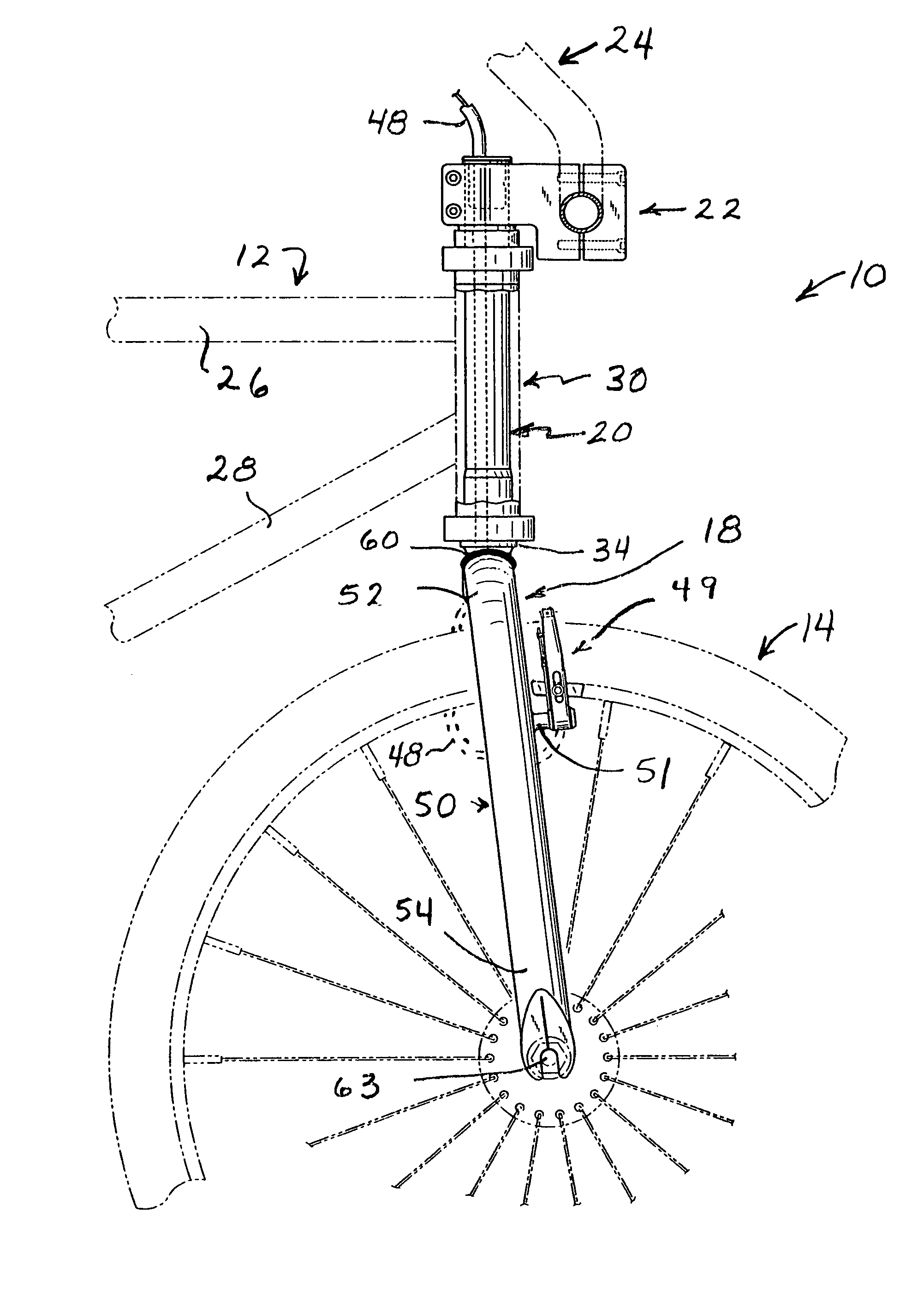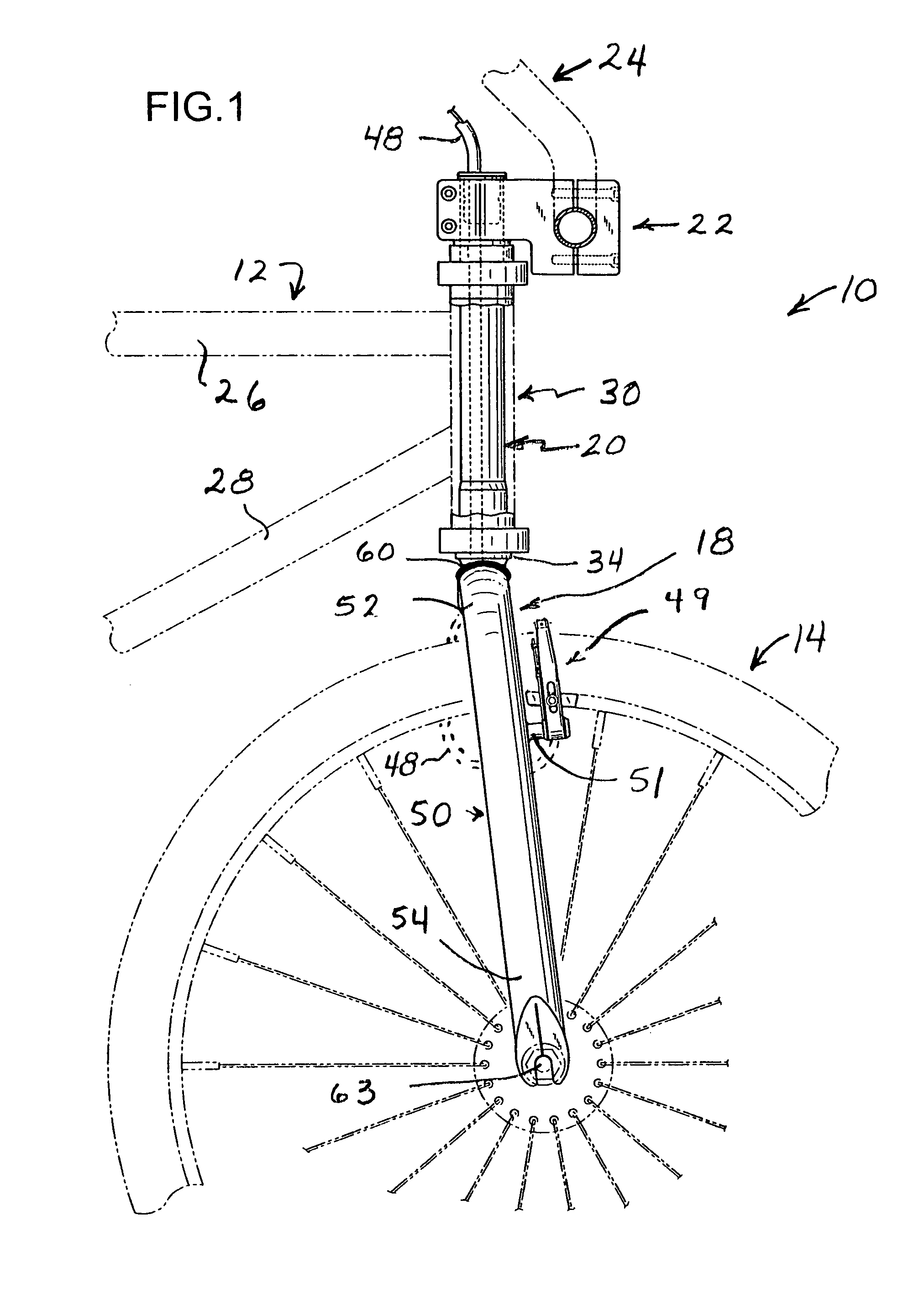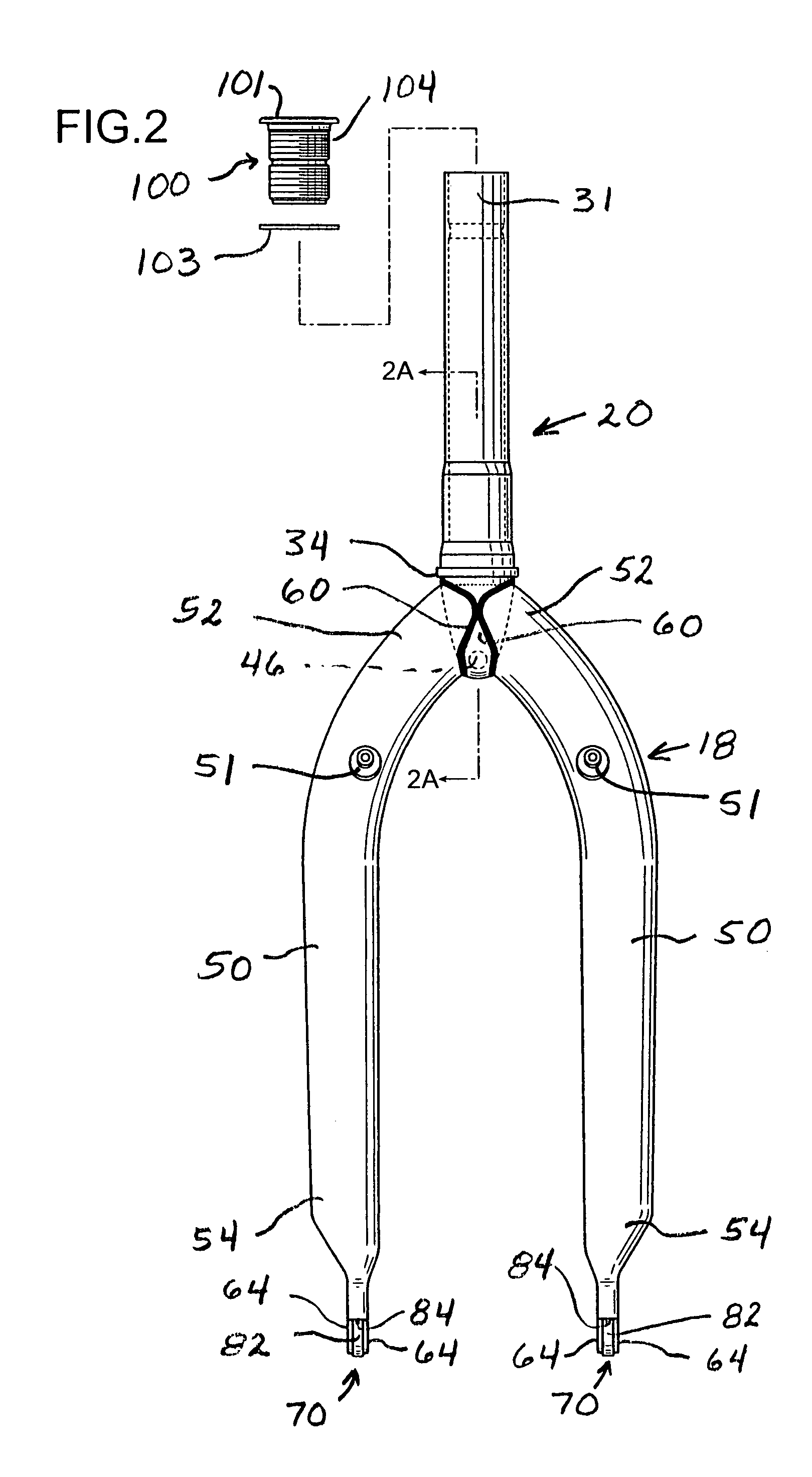Bicycle fork and steering tube
- Summary
- Abstract
- Description
- Claims
- Application Information
AI Technical Summary
Benefits of technology
Problems solved by technology
Method used
Image
Examples
Embodiment Construction
[0040]FIG. 1 illustrates the front portion of a BMX bicycle 10, which includes a conventional bicycle framework illustrated partially in phantom at 12, a front bicycle wheel illustrated in phantom at 14, and the combination of a bicycle fork and steering tube assembly indicated generally at 16 in FIG. 2. The assembly 16 includes a bicycle front wheel fork 18 and a steerer tube 20, both shown in FIG. 2. As in conventional BMX bicycles a clamping stem assembly 22 is provided to secure the bicycle steerer tube 20 to the bicycle handlebars, indicated in phantom at 24.
[0041]The bicycle frame 12 is formed of tubular, rigid members including fore and aft frame members 26 and 28 which are welded to an upright bicycle frame head tube 30. The bicycle frame head tube 30 is a hollow, cylindrical structure that receives the bicycle steerer tube 20 coaxially therewithin. The bicycle steerer tube 20 is freely rotatable within the laterally surrounding confines of the frame head tube 30.
[0042]The s...
PUM
 Login to View More
Login to View More Abstract
Description
Claims
Application Information
 Login to View More
Login to View More - R&D
- Intellectual Property
- Life Sciences
- Materials
- Tech Scout
- Unparalleled Data Quality
- Higher Quality Content
- 60% Fewer Hallucinations
Browse by: Latest US Patents, China's latest patents, Technical Efficacy Thesaurus, Application Domain, Technology Topic, Popular Technical Reports.
© 2025 PatSnap. All rights reserved.Legal|Privacy policy|Modern Slavery Act Transparency Statement|Sitemap|About US| Contact US: help@patsnap.com



